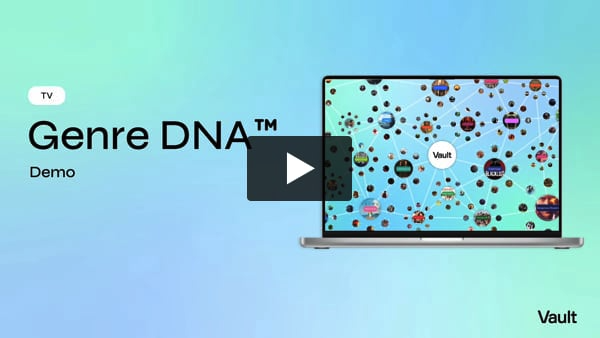Rapid Insights: ‘The Paper’ Proves ‘Office’ IP Sparks Interest, but Fresh Satire Sustains It

Peacock recently released a sequel of sorts to NBC’s iconic hit The Office, and the show has made such a mark that it has already been renewed for a second season. In this new sitcom, the documentary film crew that was shooting in the titular Scranton, PA, office for nine seasons has now decamped for Toledo, OH, to focus on a struggling local newspaper and its quirky staffers.
Here’s what you need to know about The Paper:
Vault AI uses index scores to describe the impact a given story/theme/element will have on specific KPIs:
≤79 Disappointing 80-89 Challenging 90-109 Average 110-119 Promising 120+ Outstanding
Who’s been tuning in for this quirky new sitcom?
We’re seeing an audience that’s 53% men and 69% aged 35+–a notably different viewer profile than other similar shows because of its streaming-only format. Previous workplace comedies like The Office, Parks and Recreation, Abbott Elementary, Brooklyn Nine-Nine, and 30 Rock, all of which aired on the broadcast networks, have all tended to skew much more toward women (59-62%) and even more heavily to those 35+ (87-92%) thanks to built-in differences between the linear and streaming audiences.
What does The Paper carry over from The Office?
Its set-up. Like its predecessor, The Paper relies on a clever mockumentary format to explore the offbeat Workplace Dynamics (145) and unusual Co-worker Relationships (145) in an office populated by a host of eccentric characters, and its humor relies on the cringe-worthy Awkward & Funny Moments (153) born from their interactions and direct-to-camera asides. These common elements are the series’ top viewership drivers overall and likewise played an important role in The Office’s success. Additionally, both shows share a common character, with exasperated accountant Oscar unhappily finding himself once again in front of the cameras after he moves away from Scranton.
What’s defining The Paper as its own thing?
A New Beginning (125), both for the show and its titular newspaper. The first season of The Office was, more or less, a recreation of the original British series, and fans already knew what to expect in terms of characters, relationships, and general storylines. This connection (IP Extension, 124), as well as the anticipated themes of Workplace Romance (149) and Male Friendships (140) that were transposed from one set of characters to another, drove early interest, and even non-fans could see how these compelling dynamics would start to play out from the trailers. The Paper, however, is starting with more of a blank slate and viewers know a bit less about what to expect; consequently, its direct link to The Office is nowhere to be found among its top drivers, and the themes propelling its ratings are more generalized (“Co-worker Relationships” rather than the specificities of “Workplace Romance” or “Male Friendship”). Instead, this new series is mimicking its protagonists as they venture into the unknown and reconfigure their lives (Lifestyle Change, 123).
What about The Paper’s style of comedy?
It’s landing as more topical. Whereas both The Office and The Paper take the same humorous tone and feature branches of the same paper manufacturing conglomerate, the latter zooms in on a subgroup attempting to revive a small local newspaper and tracks mediocre paper salespeople striving to become decent amateur journalists. This semi-serious focus on legacy media and struggling reporters at a time when the legitimacy of the press and News Reports (125) are widely questioned may be helping The Paper to feel especially current and of-the-moment. Its witty Satirical Humor (140) and overall style of Parody (138) are driving its bingeability, whereas these particular flavors of comedy did not register at all for The Office’s first season.
—
Most Popular Rapid Insights
Redefine your understanding of TV subgenres
Introducing Genre DNA™ – TV subgenres redefined by groundbreaking AI analysis to reveal the true drivers of viewership.
See the insights that others can’t
Genre DNA™ goes beyond traditional TV genre classifications by analyzing over 1,000 scripted and unscripted series on both linear and SVOD platforms from the last 5 years.
Each Vault Genre DNA™ report offers a precise analysis of your chosen TV subgenre, uncovering its unique drivers of viewership.
*Publicly released trailers for series are evaluated using Vault’s algorithms – utilizing our proprietary 120K+ story element database alongside viewership performance and other datasets – to identify unique combinations of stories, themes, characters, and genre elements that will drive success.
